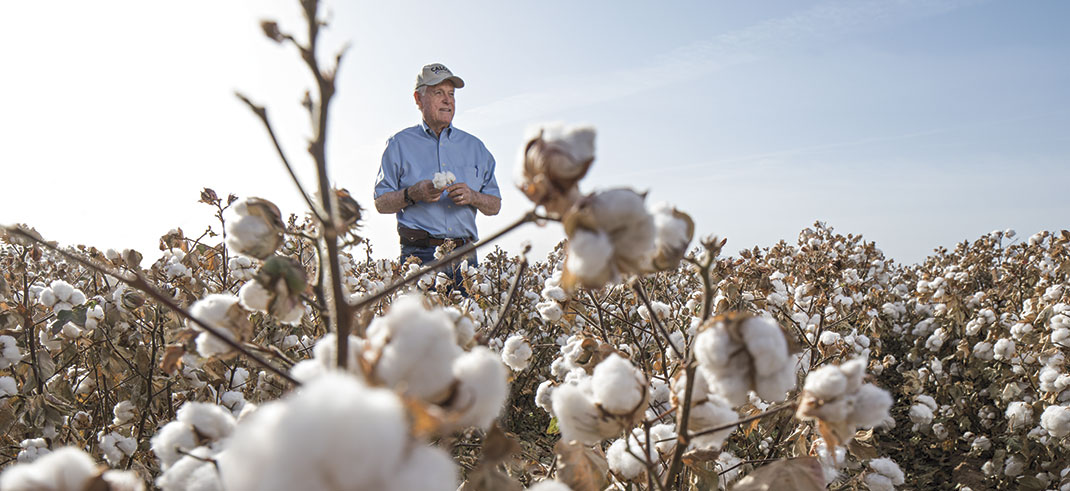The National Cotton Council wants to show that U.S. cotton not only is among the most sustainably produced fibers in the world but is striving to further reduce its environmental footprint.

Gary Adams
Can U.S. cotton claim to be sustainable?
■ U.S. cotton producers operate under one of the world’s most stringent regulatory environments and already possess a near 40-year track record of environmental improvement. Further, they continue working at becoming better stewards of their farming ecosystems through best management practices and the adoption of precision agriculture and other technologies.
Some in the textile supply chain, though, say that no definitive standard exists to measure sustainability. So the NCC appointed a COTTON USA Sustainability Task Force, which sought input from those fiber end users.
That feedback was used to develop sustainability goals for the U.S. cotton industry to reach by 2025: 1) a 13 percent increase in productivity (i.e. reduced land use per pound of fiber); 2) an 18 percent increase in irrigation efficiency; 3) a 39 percent reduction in greenhouse gas emissions; 4) a 15 percent reduction in energy expenditures; 5) a 50 percent reduction in soil loss; and 6) a 30 percent increase in soil carbon.
To help the industry reach those goals and confirm U.S. cotton is responsibly produced, the U.S. Cotton Trust Protocol was created.
How will the Protocol work?
■ First and foremost, the Protocol was developed to authenticate U.S. cotton’s sustainability. Producers will be asked to enroll in the voluntary program, then complete a 100-question self-assessment covering nine categories — soil health, nutrient management, water management, crop protection, harvest preparation, wildlife habitat, fiber quality, traceability and farm management.
 The confidential questionnaire takes about 30-40 minutes to complete. Next, enrolled producers must agree to use the FieldPrint Calculator or other qualified data product to monitor the farm for best management practices. Enrollees’ final step is completing a statement of commitment to 1) responsible production practices to help safety/environmental awareness and 2) continuous improvement. Independent verifiers will review enrollees’ answers to ensure the Protocol requirements are being met.
The confidential questionnaire takes about 30-40 minutes to complete. Next, enrolled producers must agree to use the FieldPrint Calculator or other qualified data product to monitor the farm for best management practices. Enrollees’ final step is completing a statement of commitment to 1) responsible production practices to help safety/environmental awareness and 2) continuous improvement. Independent verifiers will review enrollees’ answers to ensure the Protocol requirements are being met.
We know the majority of cotton producers already conduct most of the practices covered in the Protocol assessment. However, using this formal data collection, measurement and verification procedure will enable U.S. cotton to avoid being excluded by our customers because of sustainability issues. We want to help the textile mills, brand and retailers meet their sustainability goals by sourcing U.S. cotton.
What is the timeframe?
Gary Adams is president/CEO of the National Cotton Council of America.


